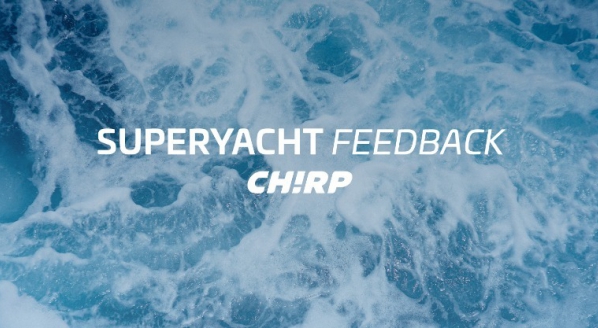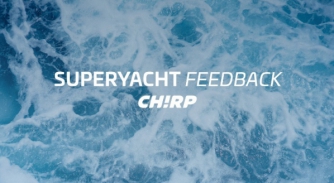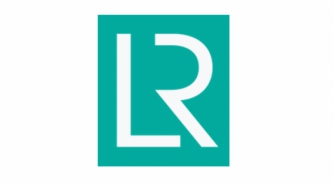CHIRP Report: Enclosed space inspection leads to crew injury
How a breakdown in communication can undermine even well-planned procedures…

The following case study is from CHIRP Maritime’s Superyacht Feedback. It is the first superyacht-specific programme and publication dedicated to improving safety in the maritime industry through vital knowledge sharing, anonymous reporting, analysis and feedback via the Superyacht Maritime Advisory Board.
Initial report
The crew scheduled a routine six-monthly inspections of void spaces A, B, and C, including testing bilge suctions and alarms. Due to the vessel’s operational timetable (06.00 to 21.00), inspections were planned after service completion or before the first service of the day.
As part of the inspection, the company’s technical manager arrived on board to inspect a series of void spaces as part of the planned maintenance system. Complete enclosed entry procedures were followed and a thorough permit-to-work system was completed. The entry teams consisted of the supervising officer, the company technical manager, the duty AB covering the night shift, the leading AB and the assistant AB, each with a designated specific role for tank guarding and watch.
Entries into void tanks A and B proceeded without incident, following the standard practice of entering through the port-side access. After completing the inspection with the technical manager, the supervising officer and the technical manager exited void space C. At the same time, the night duty AB continued testing the bilge alarms and suction systems, communicating with the engine room. To reduce the amount of radio chatter, the night duty AB switched to another channel to communicate with the engine room. The supervising officer informed the night duty AB that they would close the starboard access lid and that the AB should exit through the port side on completion of the bilge testing, as previously carried out on void tanks A and B. The night duty AB did not hear this information as they had switched to another channel.
The night duty AB’s multi-gas detector then signalled a low battery alarm, which was mistaken for a gas alarm. He donned an emergency escape breathing device (EEBD) to exit the void space, and while donning the hood, dropped the radio. The EEBD hood started to mist/fog up.
Confused, the night duty AB attempted to exit via the starboard hatch, which was closed. He struck his head on the closed cover upon ascending the ladder, requiring immediate removal of the cover for his exit.
Four days later, the night duty AB reported feeling unwell with a sore head, attributing symptoms to the impact on the tank lid.
CHIRP comment
This incident demonstrates how a single missed communication, resulting from a radio channel change, can undermine even well-planned procedures for enclosed spaces. A critical instruction about the designated exit route was not received by the lone crew member still inside the void space. This led to confusion and a dangerous attempt to exit.
The AB acted sensibly when their multi-gas detector issued a low battery warning, thinking it might be a gas alert. However, a Permit to Work and toolbox talk could have helped clarify the types of alarms, ensured the device was fully charged and confirmed that the correct PPE, such as a hard hat, was worn.
The unexpected alarm caused a moment of panic, a “startled effect”. While putting on an escape hood, the AB’s visibility was reduced, and they dropped their radio, leaving them disoriented and unable to communicate.
Meanwhile, the team outside began closing one of the exit hatches, while someone was still inside. This action should never happen during entry operations. It delayed the AB’s escape and caused a head injury when they struck the closed hatch.
Don’t rely solely on assumptions or past patterns – situational awareness can be the difference
between safety and serious harm.
The root issue appears to be a lack of a shared mental model among the team. Other activities, such as bilge testing and ongoing engine room communications, added to the distraction, as a conflicting work activity was taking place, thereby increasing the AB’s cognitive workload.
Although procedures and permits were in place, this case shows why they must be supported by clear, confirmed communication and effective task coordination. Most importantly, exit routes must never be blocked while anyone remains inside an enclosed space.
Key issues relating to this report
Communication – A critical verbal instruction about the exit route was missed due to a radio channel change, with no confirmation sought or given.
Capability – Conflicting tasks (void inspection, bilge testing, and engine room communication) were scheduled simultaneously, increasing the risk and complexity in a confined space.
Situational awareness – The AB became disoriented due to misinterpreting an alarm, impaired visibility from the EEBD and a dropped radio, leading to an attempted exit through a sealed hatch.
Teamwork – The AB was left alone inside the void space while others topside began securing an exit, demonstrating a lack of active team coordination and monitoring.
Key takeaways
Seafarers: Use closed loop communications. Ensure that all safety-critical communications are confirmed and understood, especially during entries into enclosed spaces. Don’t rely solely on assumptions or past patterns – situational awareness can be the difference between safety and serious harm.
Managers: Effective planning involves the human element. Task planning must consider human-system interactions, equipment limitations and communication redundancy, especially under time or operational pressure. Even well-trained teams need safeguards against miscommunication and confusion. Good planning includes the human factor.
Regulators: Regulations must reflect reality. Standards should mandate fail-safes for communication, equipment functionality and emergency egress in enclosed spaces. Procedures must reflect real-world conditions, not just ideal ones.
To register to CHIRP or submit your feedback, please click here.
Profile links
NEW: Sign up for SuperyachtNewsweek!
Get the latest weekly news, in-depth reports, intelligence, and strategic insights, delivered directly from The Superyacht Group's editors and market analysts.
Stay at the forefront of the superyacht industry with SuperyachtNewsweek
Click here to become part of The Superyacht Group community, and join us in our mission to make this industry accessible to all, and prosperous for the long-term. We are offering access to the superyacht industry’s most comprehensive and longstanding archive of business-critical information, as well as a comprehensive, real-time superyacht fleet database, for just £10 per month, because we are One Industry with One Mission. Sign up here.
Related news

CHIRP Report: Near miss – escape route blocked
Why systems must be physically checked after the design phase to confirm they work together in real-life conditions
Crew

Lloyd’s Register launches safety survey
With greater scrutiny on industry-wide safety standards, the classification society urges you to have your say in its Yacht Safety Culture & Wellbeing Surve
Crew

Time for a sea change
Dr Emma Gillett DC, CEO and founder of SeaFeedback, highlights the historic and endemic issues faced by crew and how they can be addressed
Opinion

A double standard in maritime and aviation regulation
Felix Christians highlights a growing regulatory disconnect in maritime aviation that he feels deserves serious attention
Opinion
Related news
CHIRP Report: Near miss – escape route blocked
2 months ago
Lloyd’s Register launches safety survey
7 months ago
Time for a sea change
7 months ago
NEW: Sign up for
SuperyachtNewsweek!
Get the latest weekly news, in-depth reports, intelligence, and strategic insights, delivered directly from The Superyacht Group's editors and market analysts.
Stay at the forefront of the superyacht industry with SuperyachtNewsweek



